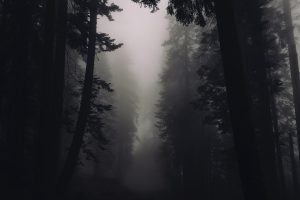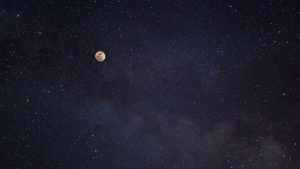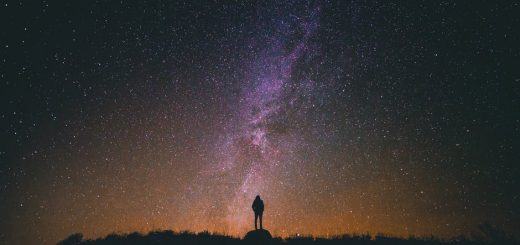Halfway out of the darkness
It’s Christmas!
Come and join the celebration.
It’s a very special day.
Come and share the jubilation.
There’s a new king born today.
Of course, we all know that that’s not strictly true, don’t we? There is no historical evidence to prove this date as the actual day that Jesus was born. Somewhere along the line, this date was set as the day on which we will always celebrate the birth of Jesus. I personally wish they hadn’t chosen this particular date. I wish Christmas was in Spring or Summer when I have more energy and positivity and would find it easier to survive the festive season (even thrive rather than just survive!). Winter is hard enough for many of us as it is without dropping the biggest festival of the year right in the middle of it!
However, this date wasn’t chosen by chance. Christians have been criticised for hijacking a pagan festival and in a sense, that’s true. The Winter Solstice was celebrated long before Jesus walked the earth. But how about we see it less as a hijacking and more as a golden opportunity to link what God had been doing through creation since the beginning of time with what He then chose to do by sending His son into the world in human form?
 The 21st December is the moment in the whole calendar year of the deepest darkness. The shortest day of the year. The day of the year with the most darkness. The day when the sun appears to stand still in the sky: that’s what the word ‘solstice’ actually means. The day when there’s a shift in the whole of creation – a complete change of direction. Up to that point, the whole of creation has been moving towards darkness, towards dying. From that point, the whole of creation moves towards life, towards light. The days start getting longer. The sunlight causes new life to emerge from the ground. Three days after the solstice, the naked eye can start to see the sun shifting again, can start to identify the light taking over from the darkness (how significant is it then that Christmas Day is actually three full days after the longest night of the year?).
The 21st December is the moment in the whole calendar year of the deepest darkness. The shortest day of the year. The day of the year with the most darkness. The day when the sun appears to stand still in the sky: that’s what the word ‘solstice’ actually means. The day when there’s a shift in the whole of creation – a complete change of direction. Up to that point, the whole of creation has been moving towards darkness, towards dying. From that point, the whole of creation moves towards life, towards light. The days start getting longer. The sunlight causes new life to emerge from the ground. Three days after the solstice, the naked eye can start to see the sun shifting again, can start to identify the light taking over from the darkness (how significant is it then that Christmas Day is actually three full days after the longest night of the year?).
Before human beings had any experience of Jesus, they had this revelation of God through His creation. They knew that they had to descend each year into the deepest darkness before they could start to move towards the light again. Each year was the same. From the deep dark emerged light. From death came new life. God – whatever word they used to described the God of creation – could be trusted to repeat this cycle year after year after year. God was faithful. God made the light shine in the darkness time and time and time again, just as He did at the very beginning of time when He declared ‘Let there be light’. This is what they were celebrating at the Winter Solstice – that creative power in the universe that never fails to bring light and life into the darkest, most lifeless of landscapes.
 It’s a clear analogy, isn’t it? Jesus describes himself as the light of the world. The prophet Isaiah describes how the people who walked in darkness have seen a great light. This is not a physical darkness but a spiritual darkness. Jesus broke through into history at the point of deepest darkness to lead all human beings into the light of God’s love. We’ve seen on our journey through the Old Testament how God tried everything with His people to keep them walking in His way, His truth, His life. They thought they knew best and kept wandering off into the darkness however, following the path that led to death rather than to life. He sent Jesus as the light of the world to guide us all, a bright light shining in the darkness, illuminating the path before us. This was God’s second mighty act of creation: the first gave life and breath to all living things, the second gave spiritual life and breath (spirit).
It’s a clear analogy, isn’t it? Jesus describes himself as the light of the world. The prophet Isaiah describes how the people who walked in darkness have seen a great light. This is not a physical darkness but a spiritual darkness. Jesus broke through into history at the point of deepest darkness to lead all human beings into the light of God’s love. We’ve seen on our journey through the Old Testament how God tried everything with His people to keep them walking in His way, His truth, His life. They thought they knew best and kept wandering off into the darkness however, following the path that led to death rather than to life. He sent Jesus as the light of the world to guide us all, a bright light shining in the darkness, illuminating the path before us. This was God’s second mighty act of creation: the first gave life and breath to all living things, the second gave spiritual life and breath (spirit).
 We can take the analogy further, can’t we? For it is in the deepest darkest situations in our lives when the light can shine the brightest. We can see the stars in the night sky most clearly when the sky is at its darkest. Sometimes we have to descend down into the deep dark before we can start to ascend into the light. Jesus describes a seed having to be buried in the ground before it can burst forth into glorious life. None of us like fumbling around in the darkness. It’s a scary, lonely place of despair and despondency. But the story of creation and the story of Jesus both point to this wonderful truth: that God will never, ever leave us there in the darkness. He will lead us into the light and into new life.
We can take the analogy further, can’t we? For it is in the deepest darkest situations in our lives when the light can shine the brightest. We can see the stars in the night sky most clearly when the sky is at its darkest. Sometimes we have to descend down into the deep dark before we can start to ascend into the light. Jesus describes a seed having to be buried in the ground before it can burst forth into glorious life. None of us like fumbling around in the darkness. It’s a scary, lonely place of despair and despondency. But the story of creation and the story of Jesus both point to this wonderful truth: that God will never, ever leave us there in the darkness. He will lead us into the light and into new life.
Today we celebrate the gift of Jesus to humankind. This constant reminder that God is with us. Emmanuel. We find ourselves halfway out of the darkness. We leave the darkness behind us and move towards the light.
There is so much to celebrate!
So come and join the celebration. It’s a very special day.












